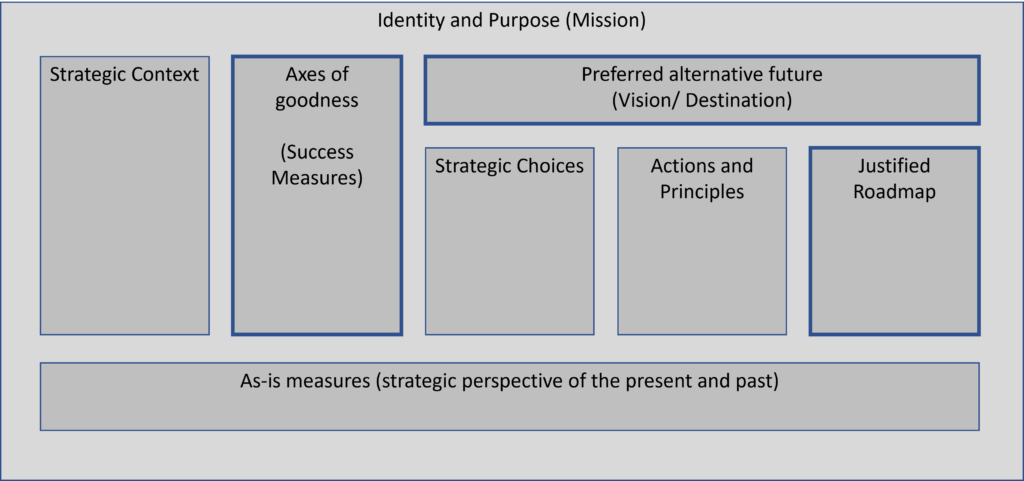Different organisations have different expectations about what a strategy should do for them. Each perspective is legitimate and has value. All are necessary to some extent but may be less significant or just taken as “given” in some contexts. Although all are necessary, they do not all have to be developed within something called a strategy process. Some could be done as part of planning, or countless other labels. What gets called strategy is a minor issue.

The most common perspectives
The most common three cultural expectations of strategy can be characterised as follows:
- Destination based: We need to focus on where we are heading towards. If we can define and agree on this, then everything else is tactics about how to get there (actions outside of the strategy formation process).
- Metric based: If we can agree how we define success (the axis of goodness), then everything else if just tactics of how to get there.
- Roadmap based: Vision, success criteria etc are all well and good, but unless there is a roadmap with a business case its just fluff.
When called upon to help in developing strategy it is important to identify what the cultural expectations of strategy are. It may be possible to influence these, but unless they are uncovered, they cannot be addressed.
Additional perspectives
Although the three listed above are, in my experience, by far the most common, there are additional perspectives that are of great value:
- Strategy as Identity (Who is us?): This is a vital section that is very often missing (or at best latent or assumed) but is one of the key strategic questions.
- Strategy as a set of choices: Formation of strategy often uncovers a bunch of key questions, the art of strategy being to identify and address the most significant and insightful of these questions. Once a good set of such questions has been posed, analysed and coherently answered, then writing them up in suitable form is effectively the strategy.
- Strategy as principles: Principles can be seen as strategy regarding future (as yet unknown) choices. It’s an articulation of what is important to us but is not restricted to things that can be expressed on a simple axis of goodness.
I have seen all of the above work well in particular circumstances. An organisation generally needs some degree of all of these (but not all need to be included within the strategy formation process). In general a strategy cannot have much traction and impact until there is something substantive enough for a board to give it informed consent (see Informed Consent , Re-coupling Strategy and Planning and what’s a plan.
Supporting factors
The two remaining parts of the strategy framework above represent areas that should be considered as part of any strategy formation process (but are not generally considered to be the primary output)
- Strategic context: Articulating the understanding of the external environment is a foundation for the choices we then make. It also forms a reference for us to later check if the situation has changed sufficiently to make a re-evaluation of strategy necessary. See more on Strategic Context
- Strategic perspective of the as-is: Support to the development of strategy in each of these mindsets requires data. Capturing and analysing suitable data is typically time consuming and expensive and the more desperately a strategy is needed, the harder it is to get suitable data. An iterative approach can help to determine the data most likely to be insightful – gathering readily available data in the initial stages of strategy development, then identifying what additional data is most likely to be valuable. Data is also required in making the case for informed consent to any required actions or investments.
In my experience, good practice is to cover the whole framework, progressing generally from left to right, but recognising that sometimes work needs to be reconsidered in the light of later decisions. The process almost always has some degree of iteration.